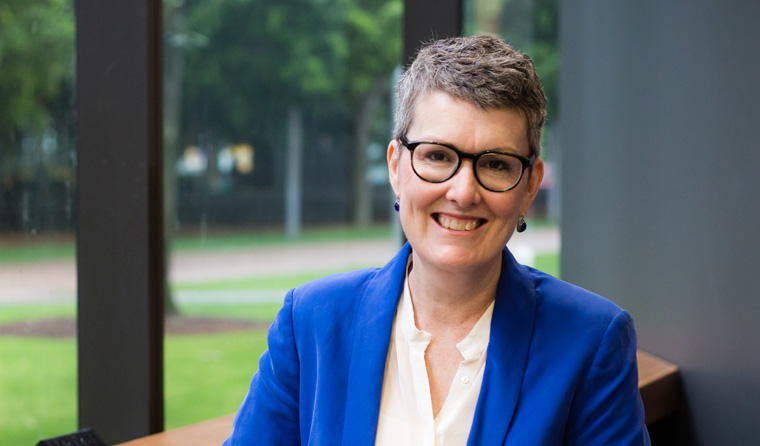News
‘Remains a mystery’: Examining gender’s impact on COVID-19
Why does coronavirus kill more men than women? Australian researchers are seeking the answer in a bid to remove sex and gender bias.
 Although more women on average are being infected with coronavirus, global data shows up to twice as many men are dying.
Although more women on average are being infected with coronavirus, global data shows up to twice as many men are dying.
COVID-19 is the latest example of a disease that affects men and women differently.
Although more women on average are being infected with the virus, global data shows up to twice as many men are dying.
Records from countries with gender-disaggregated data show that, up to June, 63.53% of deaths in China were men, 58.25% in Italy, 57.13% in England, and 55.88% in Australia.
While there is speculation as to why, the reasons for the disparity are still largely a mystery, according to Professor Louise Chappell, Director of the Australian Human Rights Institute (AHRI).
‘There may well be some hormonal differences at a disadvantage in men and advantages women – it could be estrogen that is protecting women from the worst ravages of the virus,’ Professor Chappell told newsGP.
‘But there’s also this sense that perhaps it’s men’s lifestyle factors that are adding to their vulnerability.
‘So the fact that men tend to drink alcohol in higher volumes, that they are more likely to smoke, that they’re less likely to report illness.
‘That’s a real gender dimension to the problem.’
In an effort to better understand the combination of factors at play in COVID-19 infection and mortality rates, the AHRI, together with the George Institute for Global Health, is undertaking a new research project supported by the UNSW Sydney Rapid Response Research fund for COVID-19.
Researchers will analyse gender-disaggregated data collected from global COVID-19 statistics, as well as national policies and activities.
In Australia, up to 18 June, data shows that the virus had been most commonly diagnosed among women aged 20–29 (844).
Dr Cheryl Carcel, a researcher on the project, says one possible reason is the significant number of women in frontline healthcare roles, primarily as nurses. Women make up 70% of all health and social-services staff globally.
‘It means that they are more likely to be exposed to the disease … there’s a heavier burden on them,’ she told newsGP.
‘If you have a family, when you go home from work you have this anxiety that you might pass on the disease to people in your household.’

Researcher Dr Cheryl Carcel says one possible reason more women are infected is the significant number who frontline healthcare roles, primarily as nurses.
Women’s exposure is often further heightened by the lack of access to appropriately designed personal protective equipment (PPE).
‘We know that PPE, for instance, [that is] often provided has been built on a male model,’ Professor Chappell said. ‘So a lot of the gowns and so on are not built for female bodies and that in itself puts more women at risk.
‘It just seems so concerning at that most basic level … that we still haven’t even taken into account the differences between men and women and the increased exposure that that will lead to down the track.’
To better understand their experiences, a second component of the study will involve surveying 3800 frontline health workers in Australia. Researchers hope to gain insight into levels of stress, anxiety and depression, with a gender-specific breakdown of experiences.
Conducted in two parts, the initial survey was distributed at the height of the pandemic in April, with the second half expected to be completed by October. The responses will then be compared and assessed on any mental health developments, such as post-traumatic stress.
‘The initial analysis of the data is showing that women have definitely reported higher rates of all three mental health issues,’ Professor Chappell said.
‘Interestingly, we would have assumed that it was people with families not wanting to carry the virus back into the home, but it was single people as well. Maybe it’s the isolation that’s adding to people’s distress over their exposure.’
Another gendered element of the pandemic the project seeks to explore and address is the increased prevalence of domestic violence perpetrated against women.
Researchers will look into the demand placed on frontline family violence services during the pandemic, as well as capacity and regulatory responses, including the role of GPs, and how they can be strengthened.
‘It’s quite clear that governments’ responses have tended to be in providing more workers on hotlines, call centres and so on. But they’re not as relevant to women who are locked down with their perpetrator who can’t actually use those services,’ Professor Chappell said.
‘So what else can we do? How else can we think innovatively around the sorts of protections we can provide? How might telehealth also be used in a way that’s advantageous for those who are most risk, and where might they get safe spaces to access telehealth?
‘GPs play a really, really critical role in that.’
Gender in research
The AHRI and George Institute will take their quest to remove bias one step further in their second project, ‘Sex and gender in medical research’.
It was not until 1990 that human clinical trials started to include women.
Yet, despite the notable differences in physiology, it is 30 years on and early-stage medical research is still typically carried out on male mice or male cells, and human research conducted mainly in men, with the results then generalised for both sexes.
‘I literally fell off my chair when I realised that – I truly couldn’t believe it,’ Professor Chappell said.
‘It’s a complete and utter blindness in the scientific method.
‘Now we have this issue where a lot of research is invested in the findings of that data over a very long period of time. So if we’re going to add this new variable in, it may well critique and raise questions about all of what we know about medicine once we add the other 50% of the population into the picture.
‘So this is quite a radical shift in the way we think and do medical research.’

The reasons for the gender disparity are still largely a mystery, according to Professor Louise Chappell, Director of the Australian Human Rights Institute.
Research into heart disease is a prime example. While being the leading cause of illness and death for Australian women, they present later and experience greater delays in diagnoses and treatment due to methods informed by research conducted on men.
Men are also affected by sex and gender bias.
When it comes to diseases such as osteoporosis – what is often considered a postmenopausal women’s disease – men can be overlooked despite accounting for nearly a third of osteoporosis-related fractures.
‘It’s long past time the field of medicine recognises that women and men often suffer differently and heal differently for similar conditions,’ Professor Robyn Norton AO, Principal Director of The George Institute, said.
‘We need to acknowledge that women and men are different in many ways and develop better research on sex and gender differences so we can drive better treatment, care and outcomes.’
Professor Chappell believes it is largely a human rights issue.
‘It’s sort of a degree of discrimination that’s happening within the system,’ she said.
‘If we don’t do the analysis in this way, then we’re not going to be able to let people have the same equal access to healthcare [and to the] same standard of health.
‘We are making assumptions about the sorts of diseases and experiences that women have, and we make the same about men. It’s costing people’s lives.
‘Our aim, ultimately, for both projects is to make sure that the whole research pipeline is alert to both the sex and gender dimensions so that we ask the right questions, we gather the right data, we do the right analysis, and then we get the right medical protocols and policy positions in place.
‘In terms of our readiness for the next pandemic, or the ongoing nature of this pandemic, it’s really essential that we have an understanding of who’s most exposed where and when, and what we can do to change that level of exposure so that everyone has the same level of protection.’
Log in below to join the conversation.
coronavirus COVID-19 gender
newsGP weekly poll
Which of the following areas are you more likely to discuss during a routine consultation?